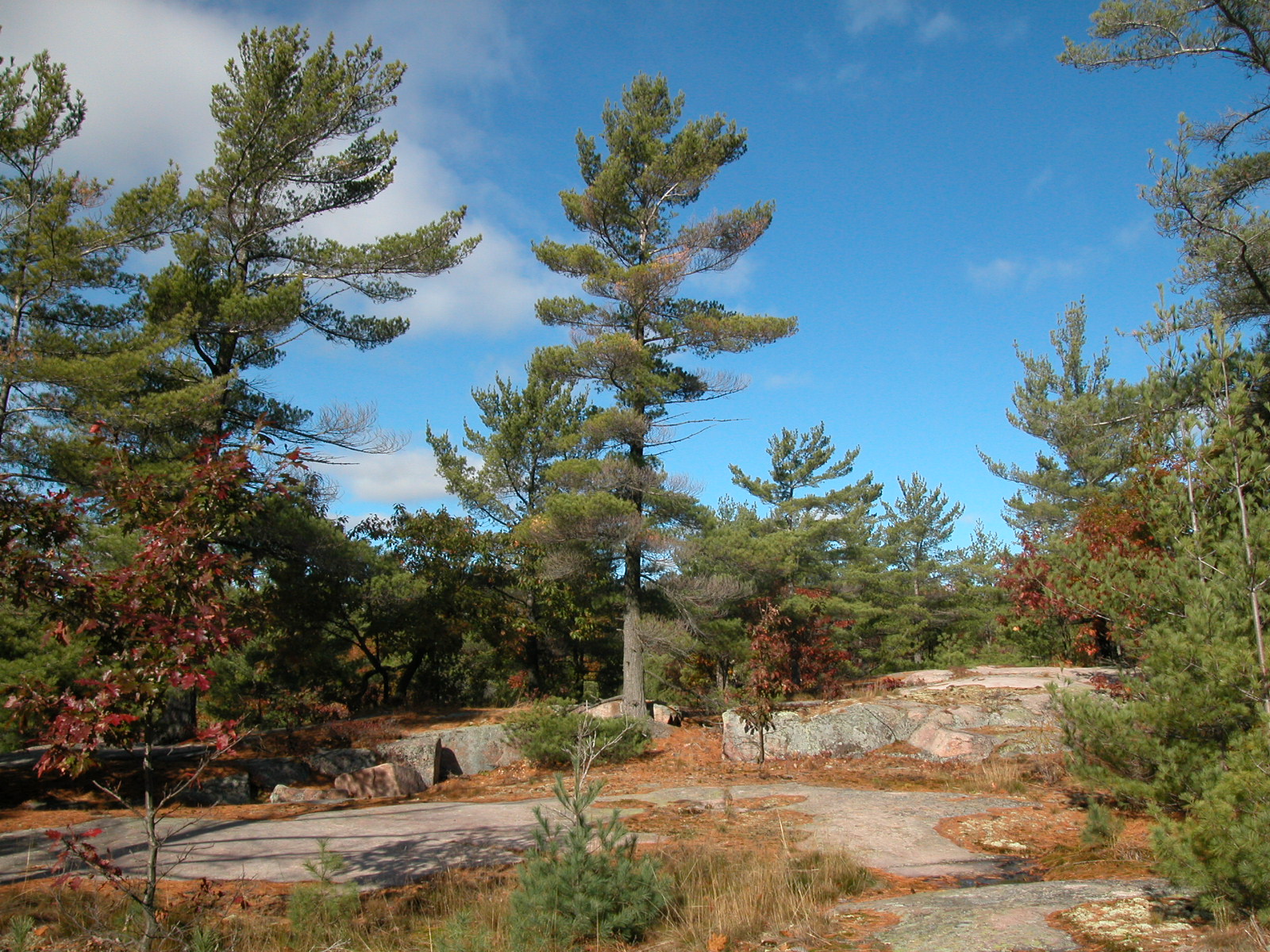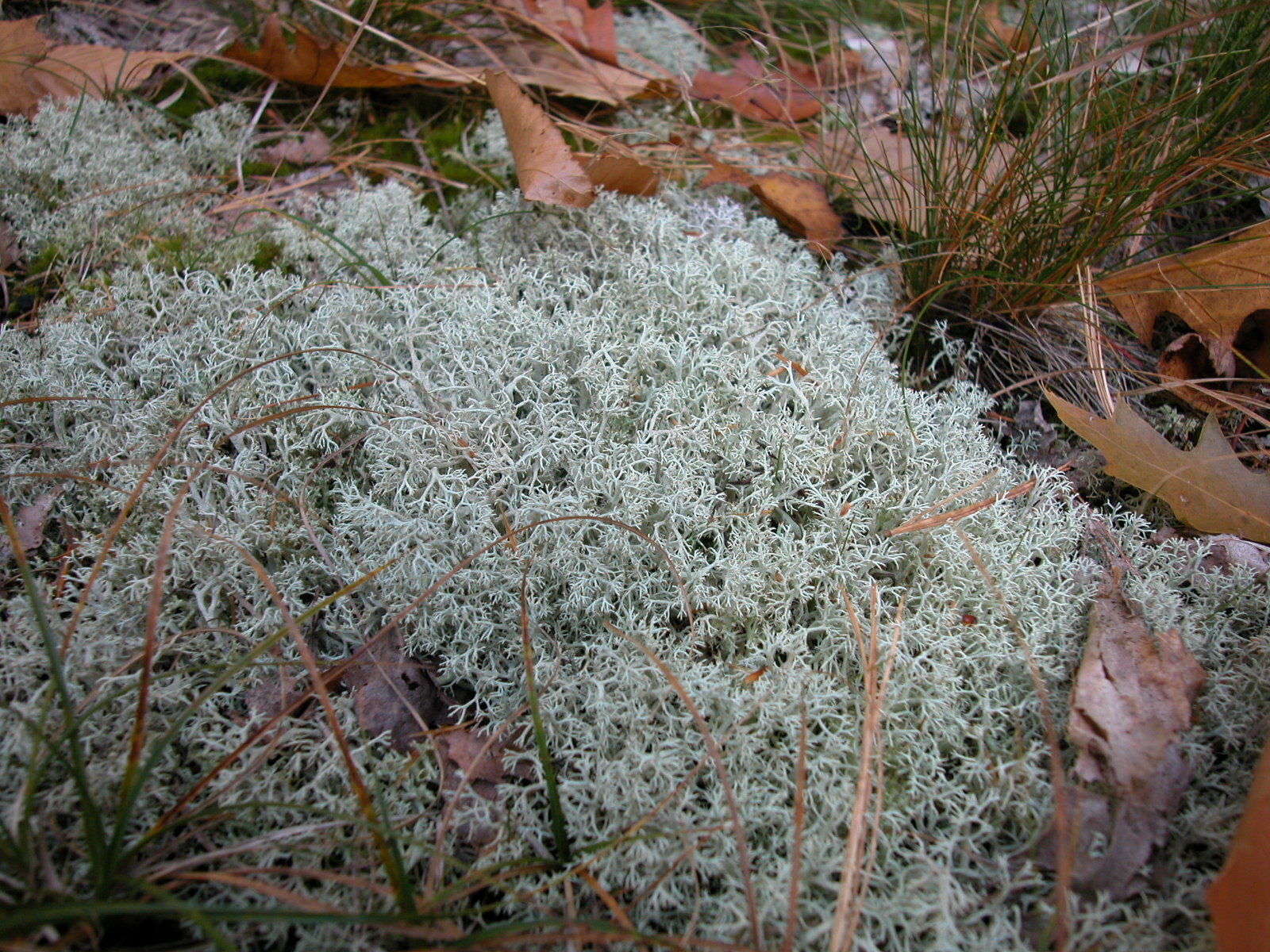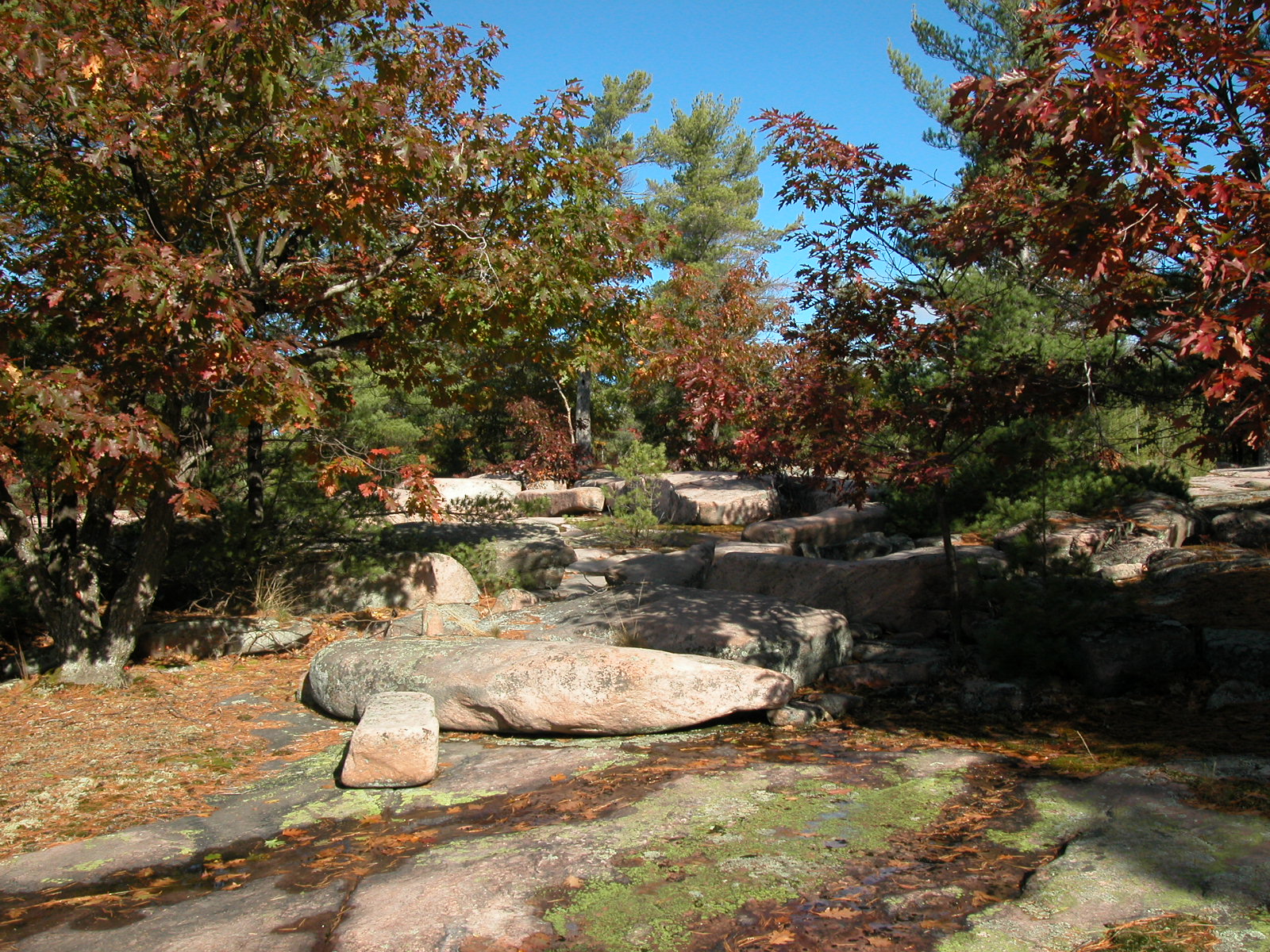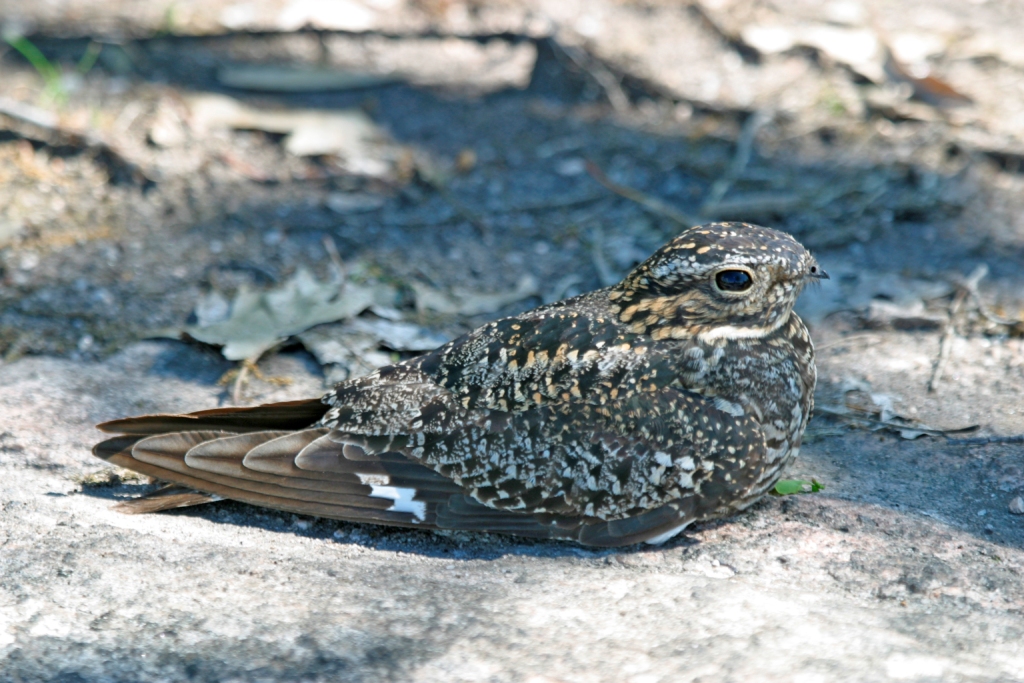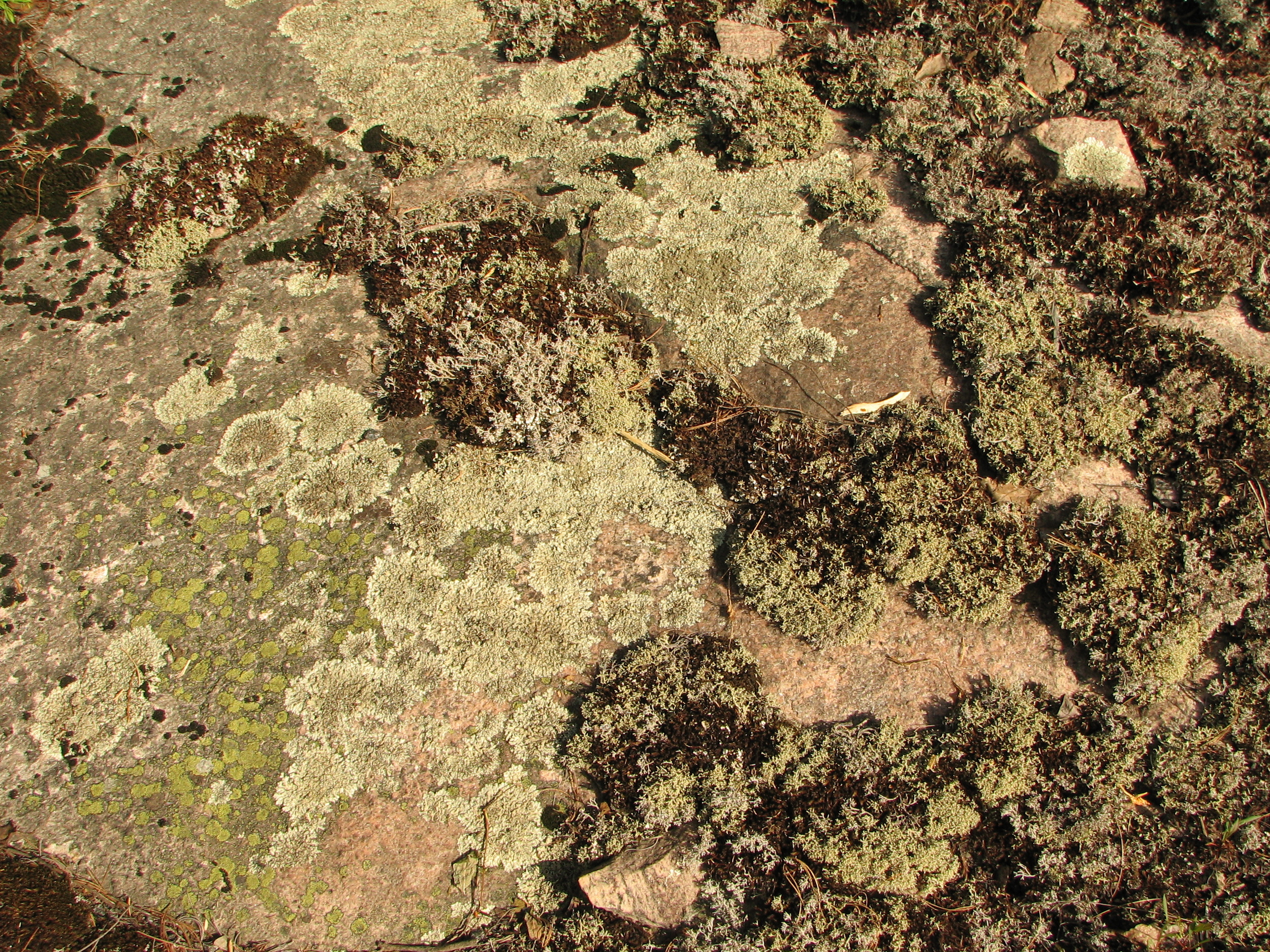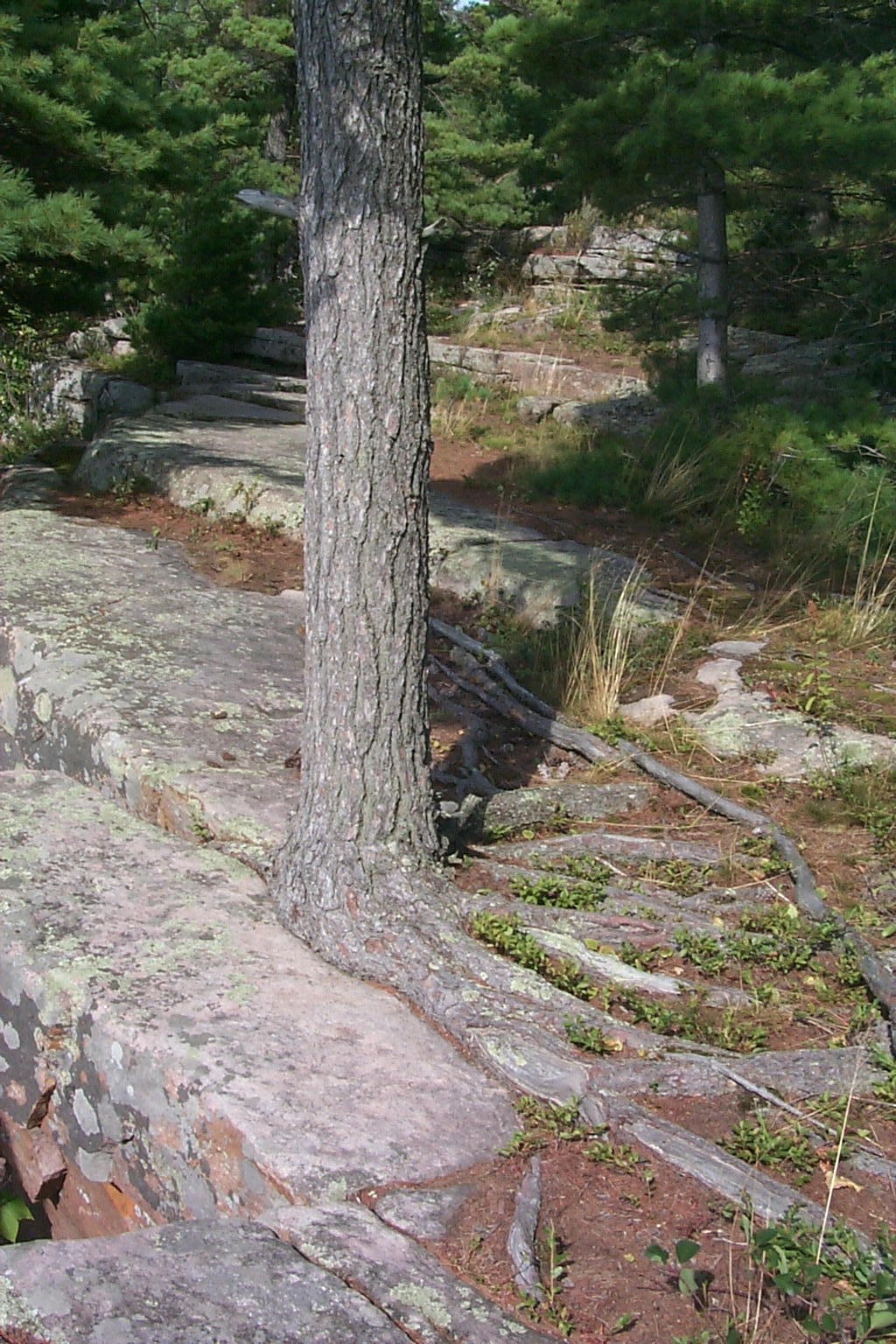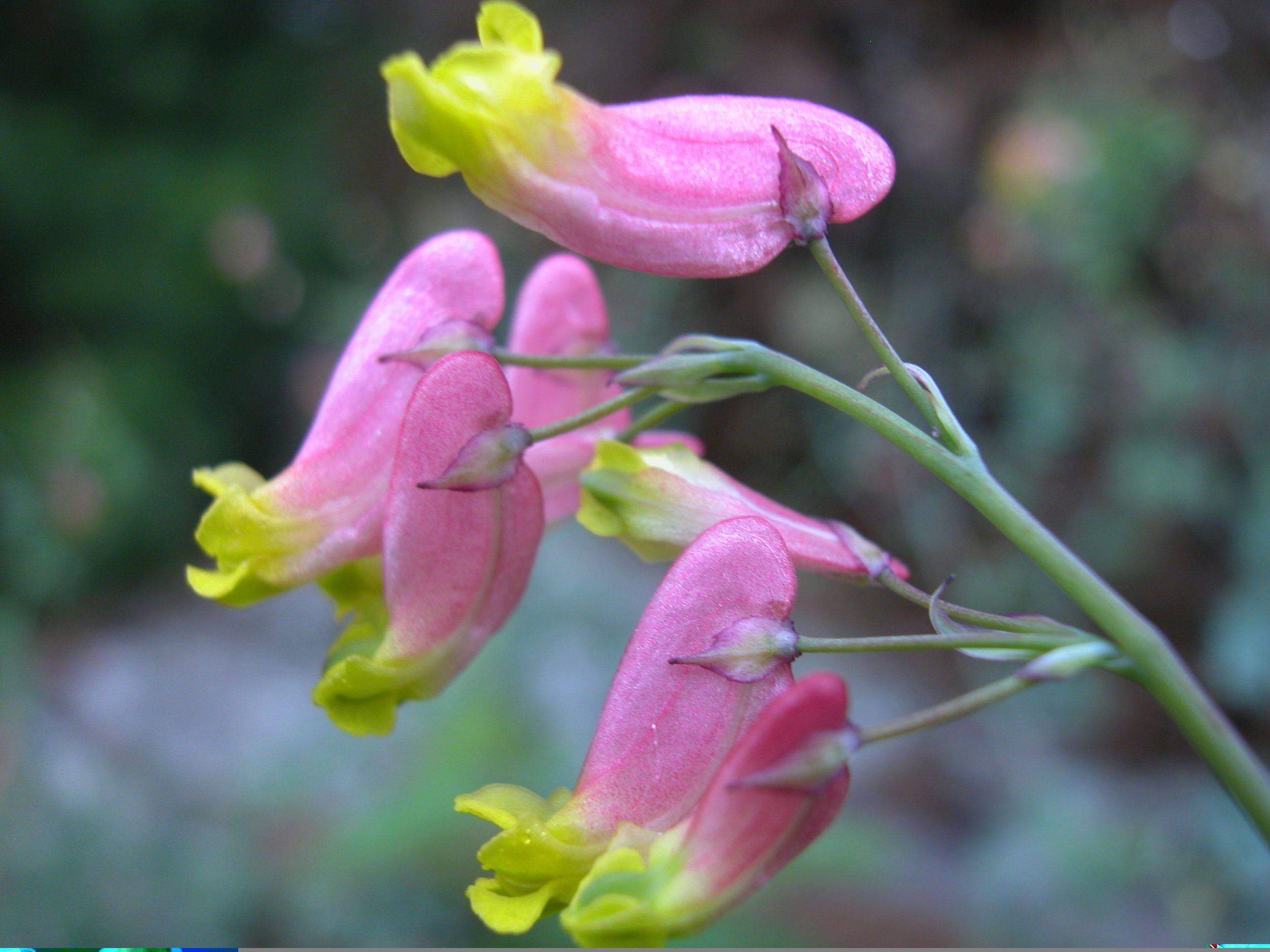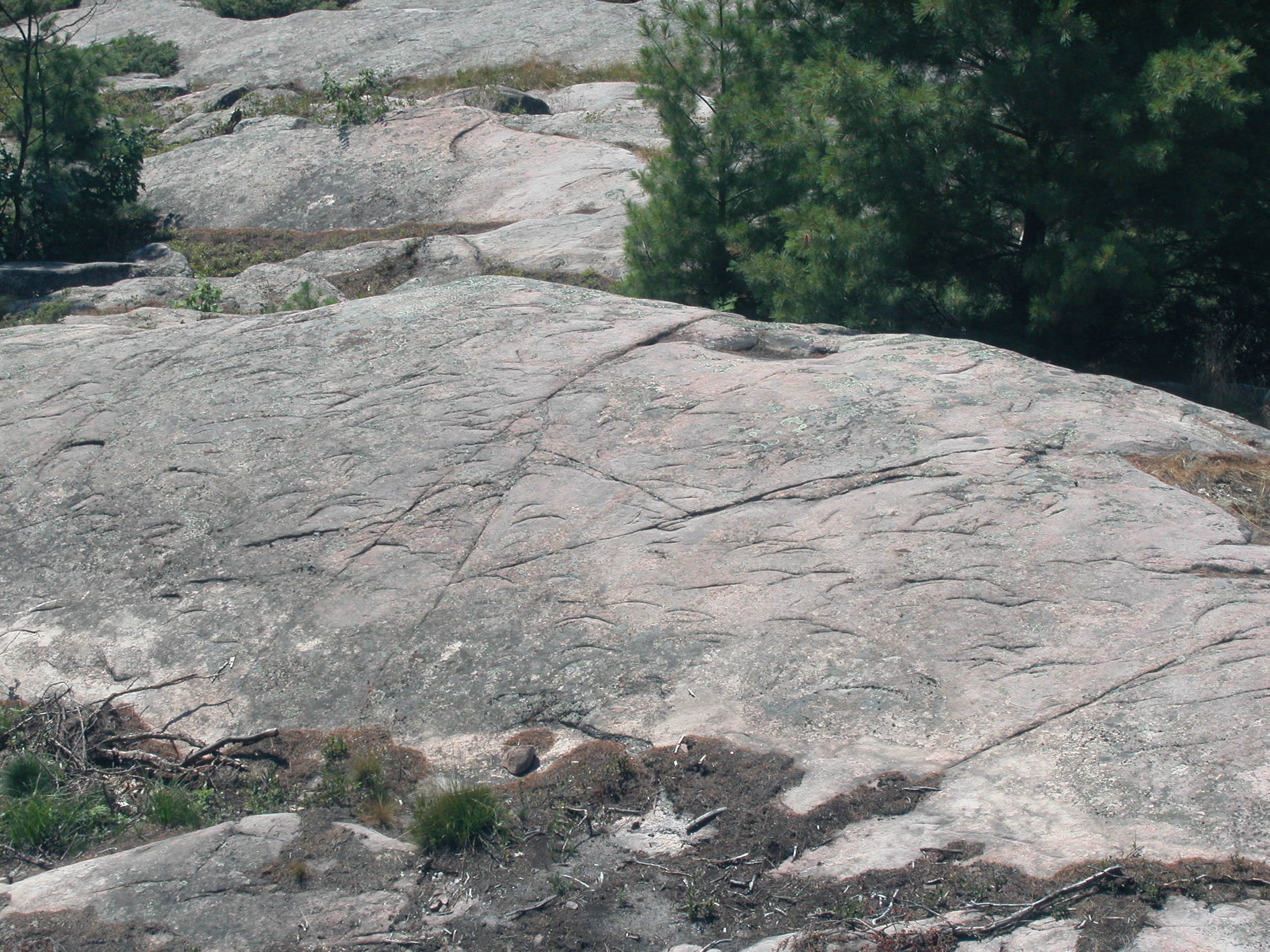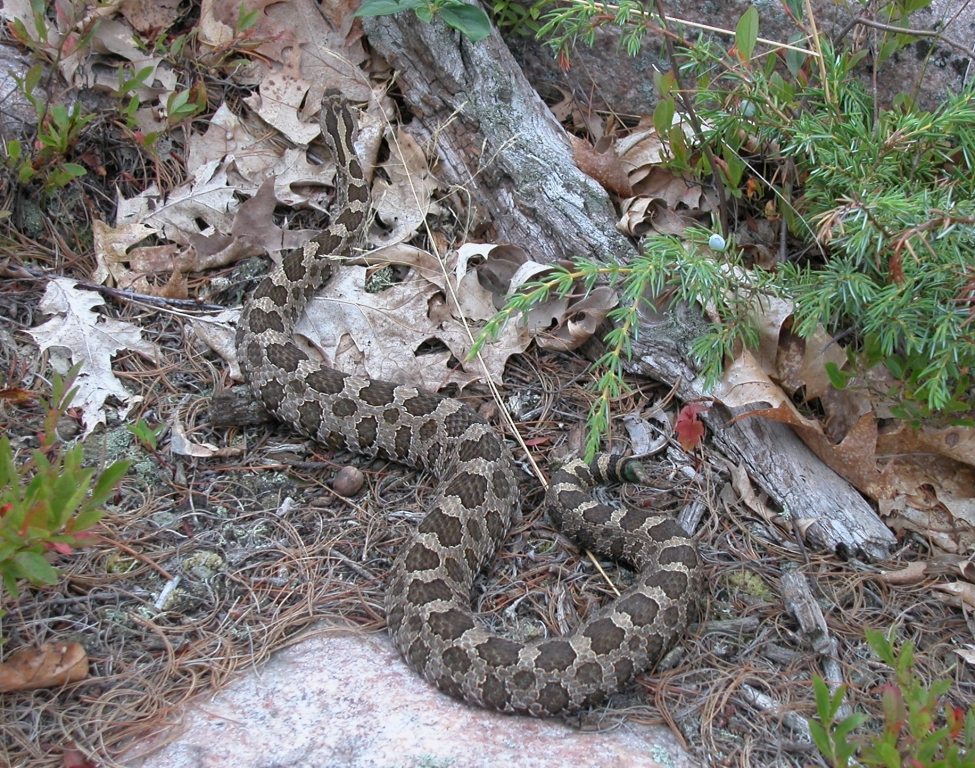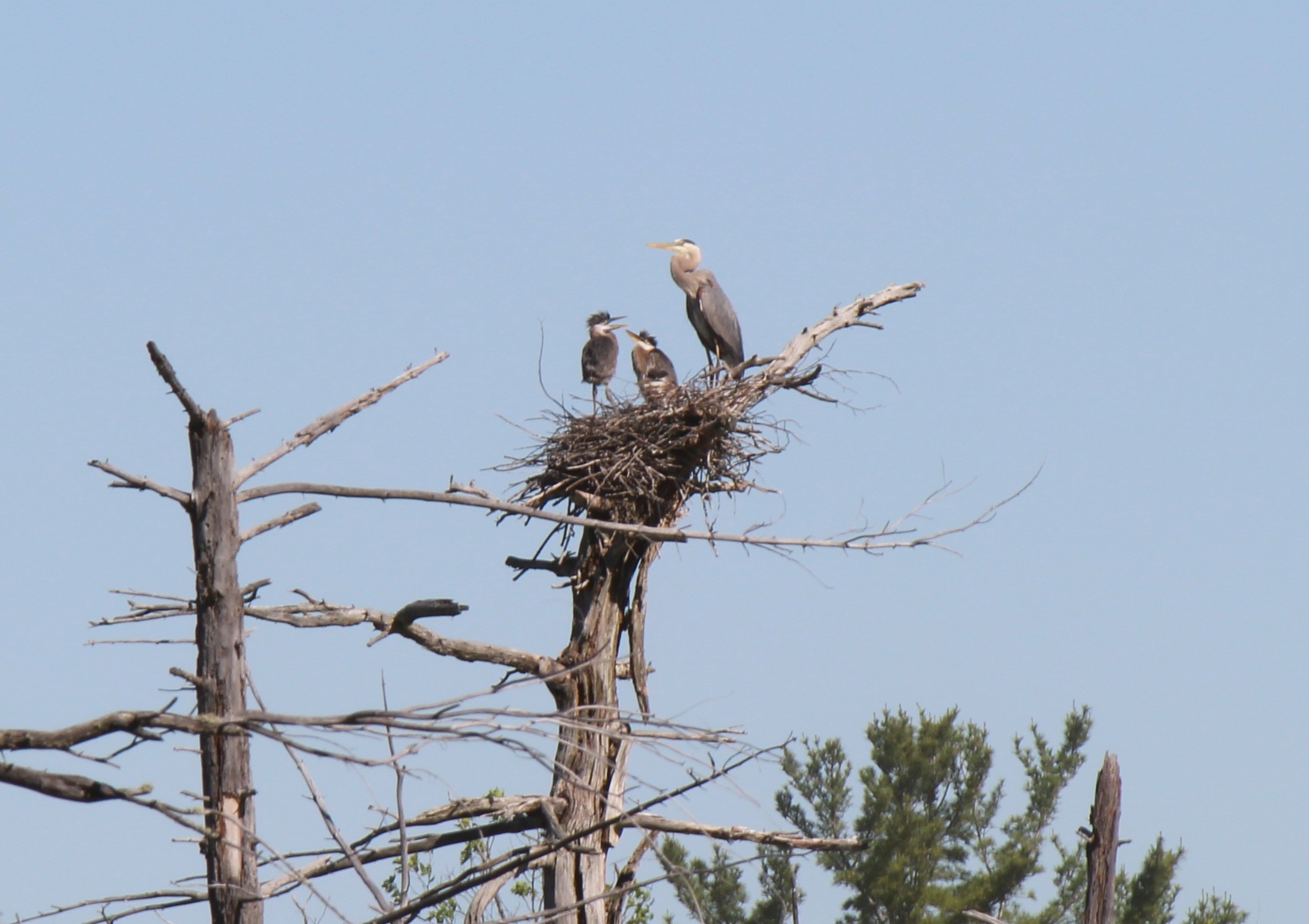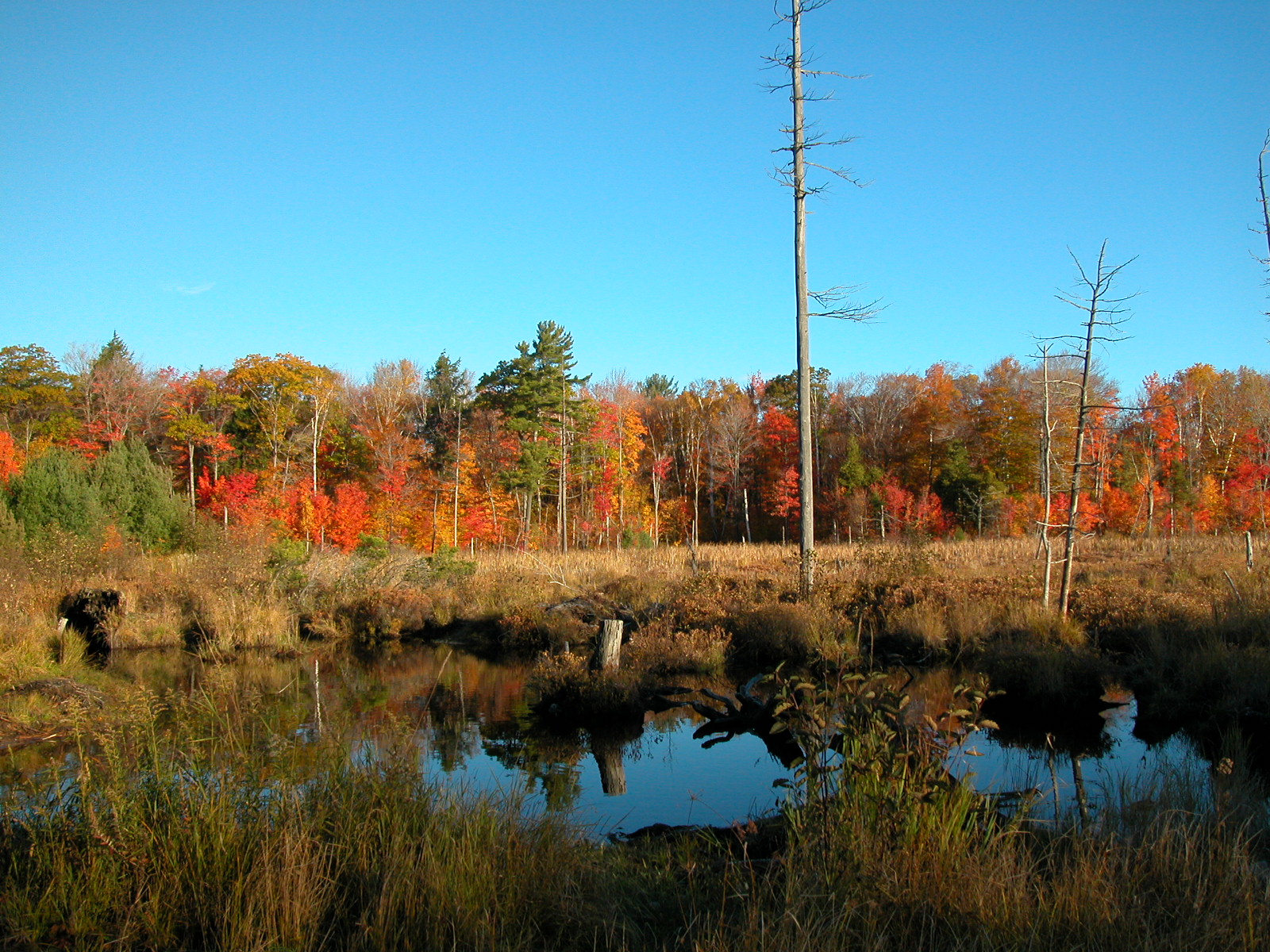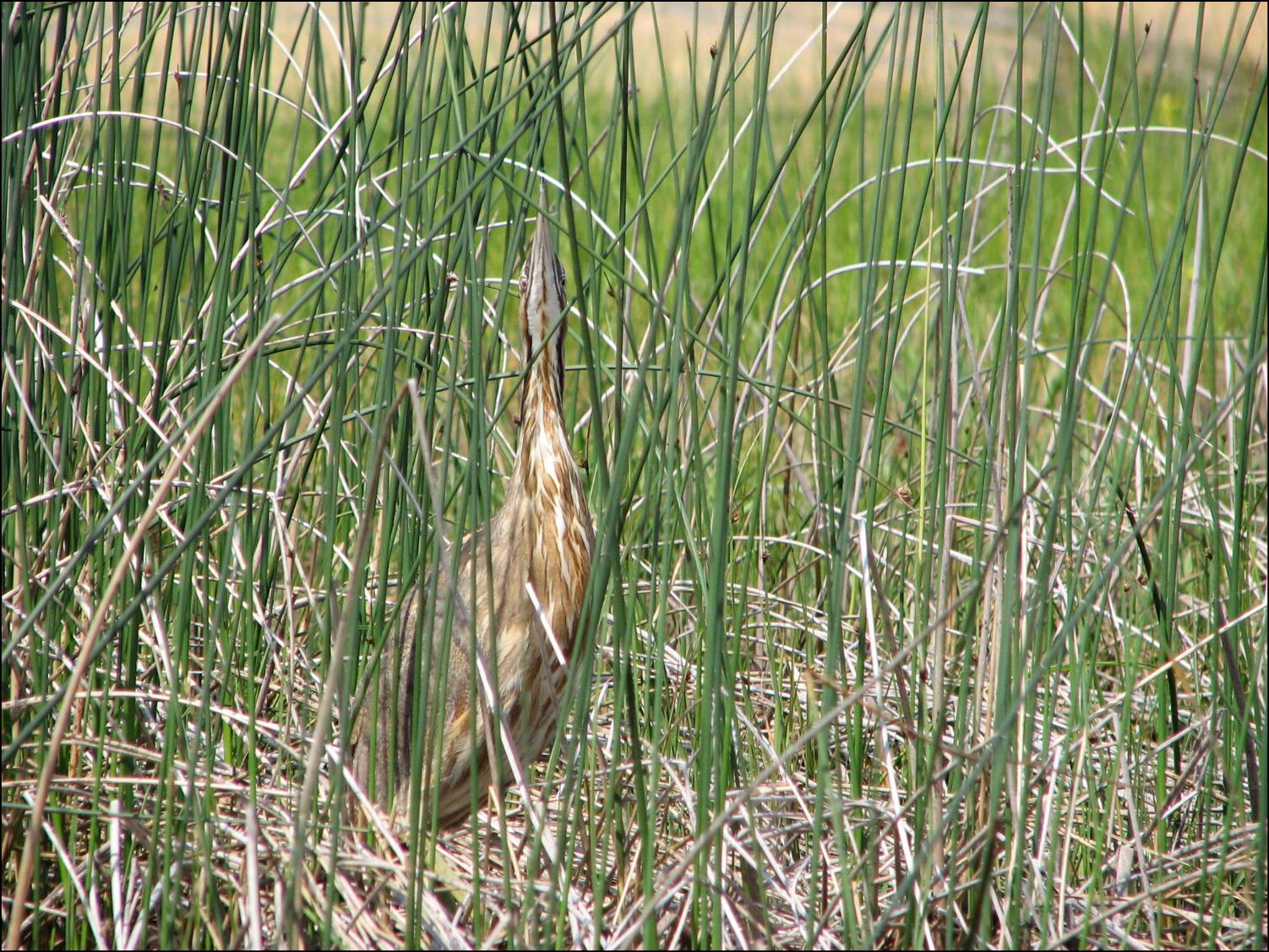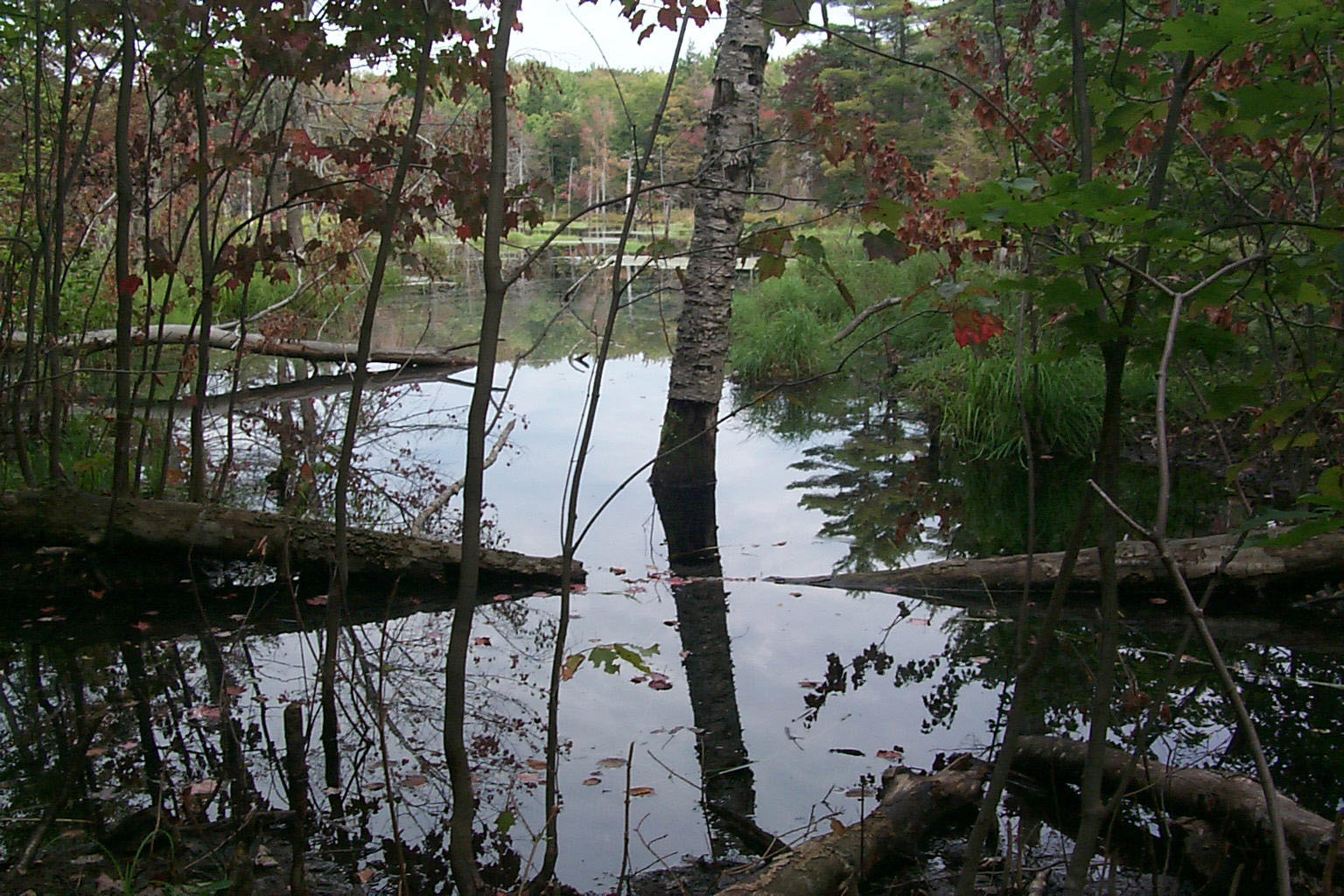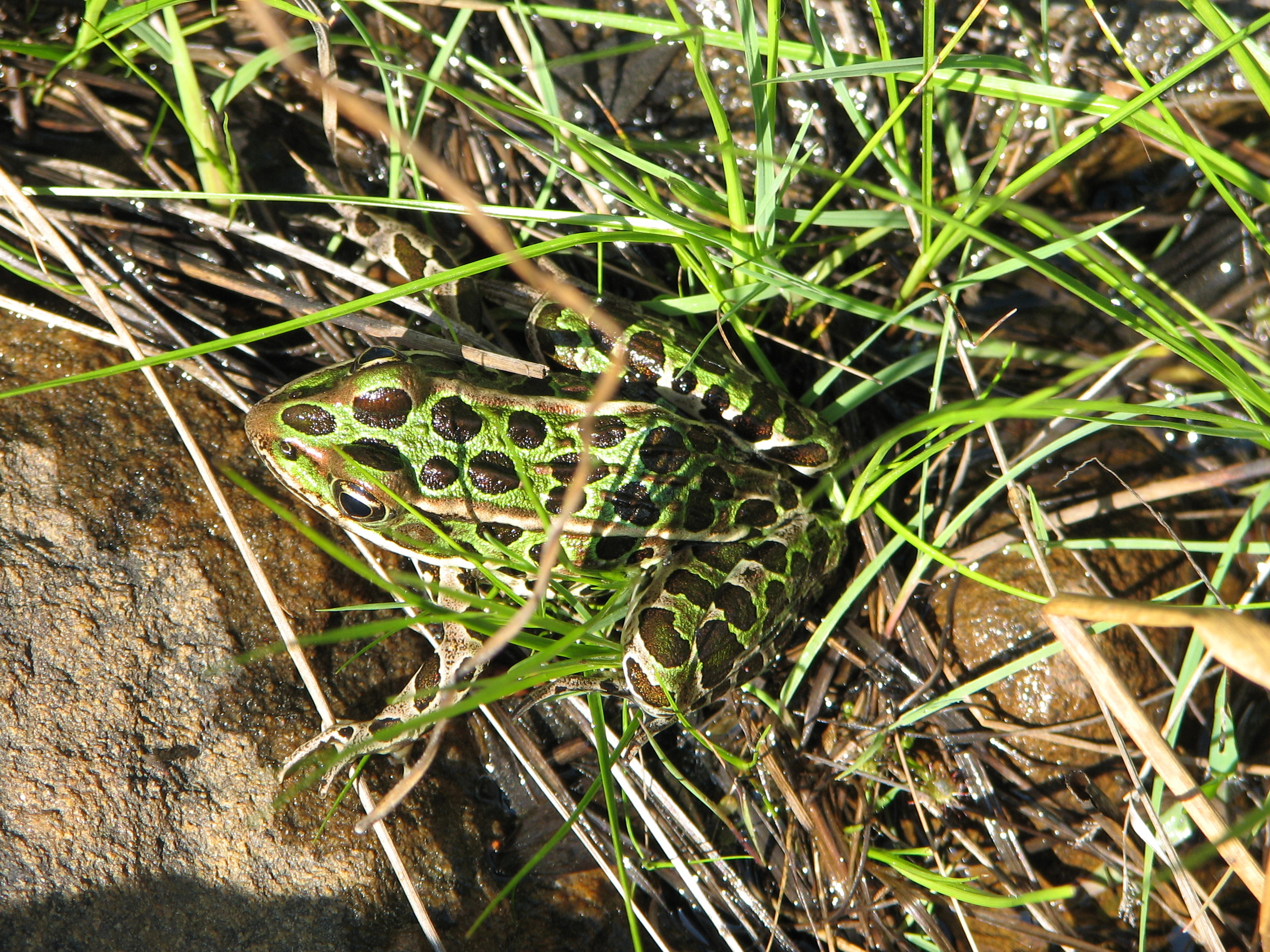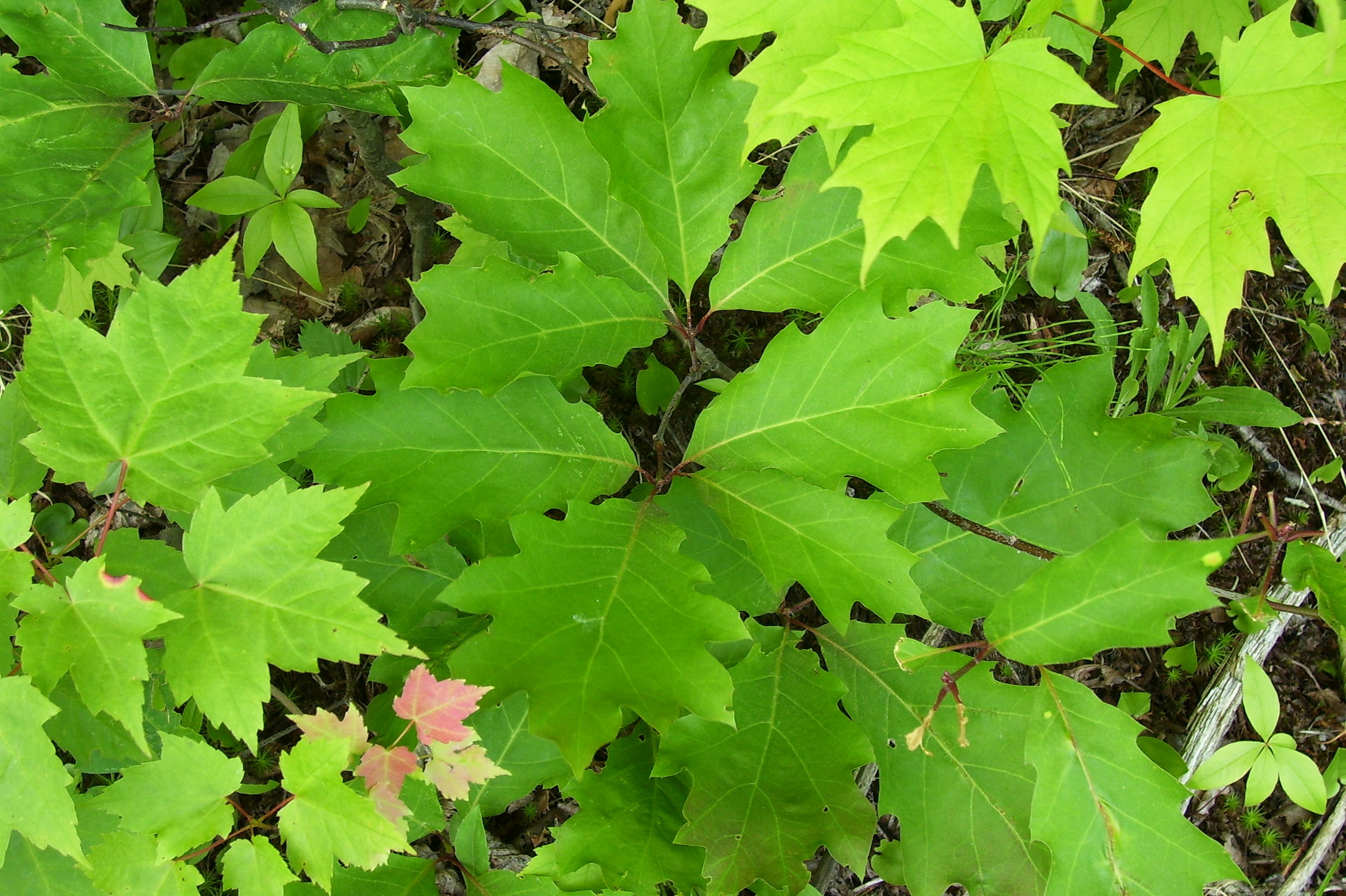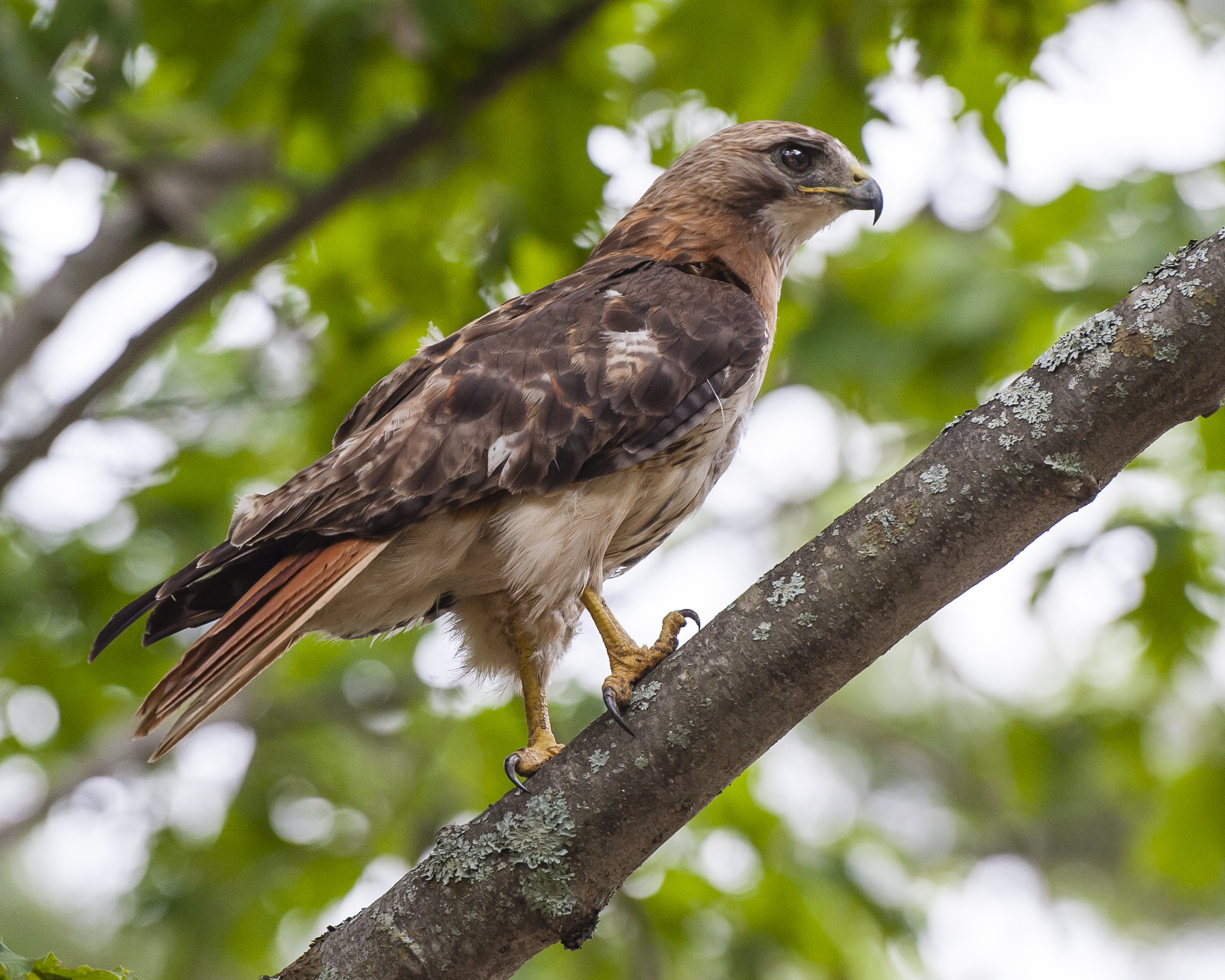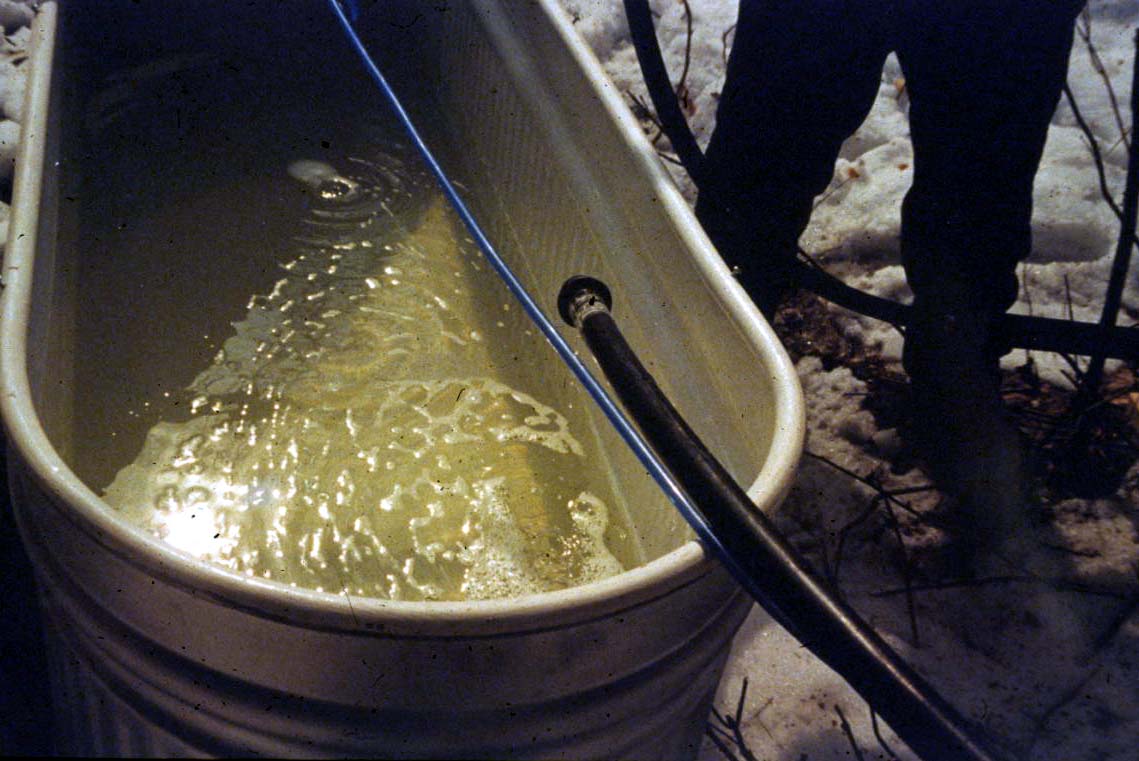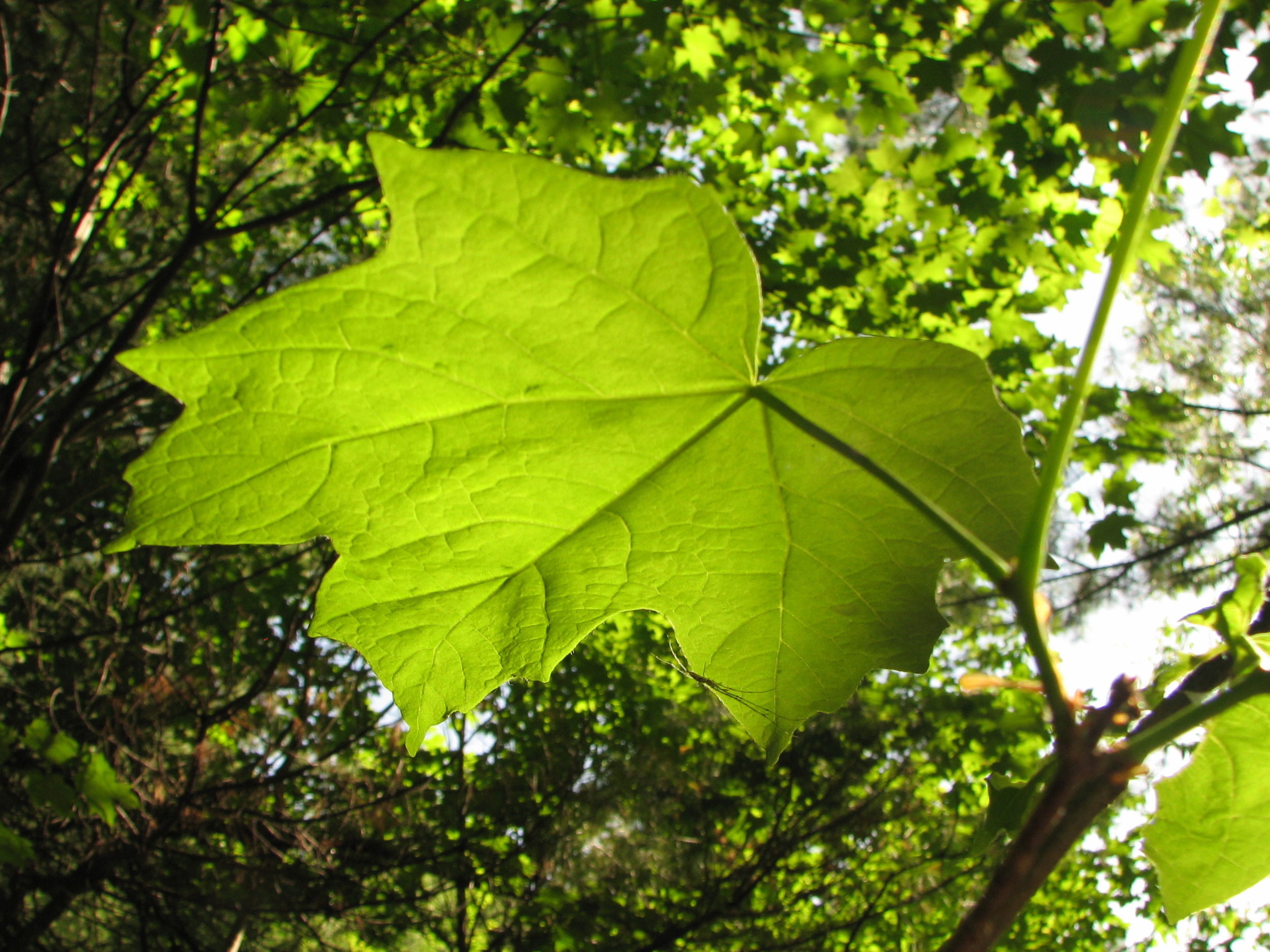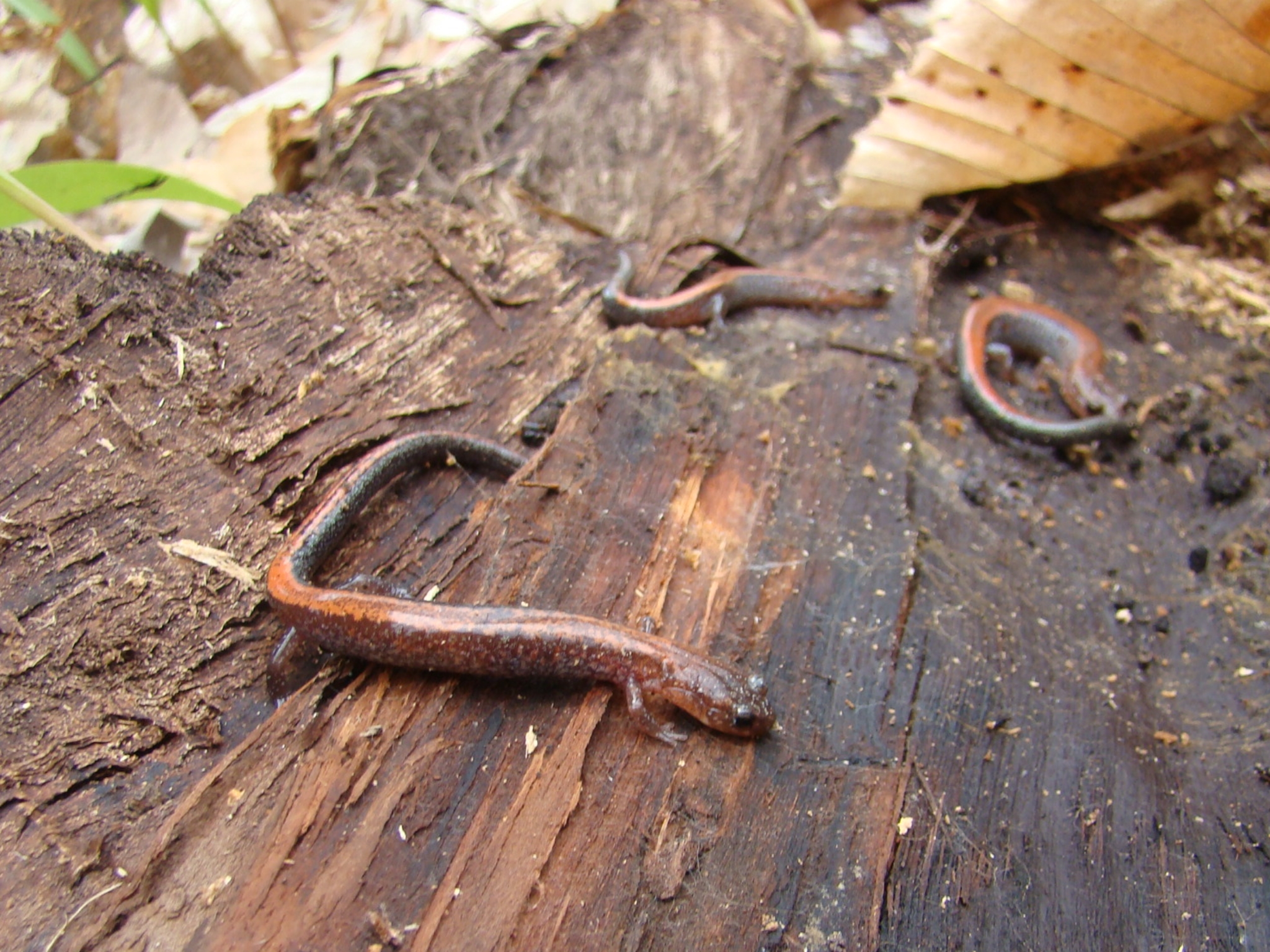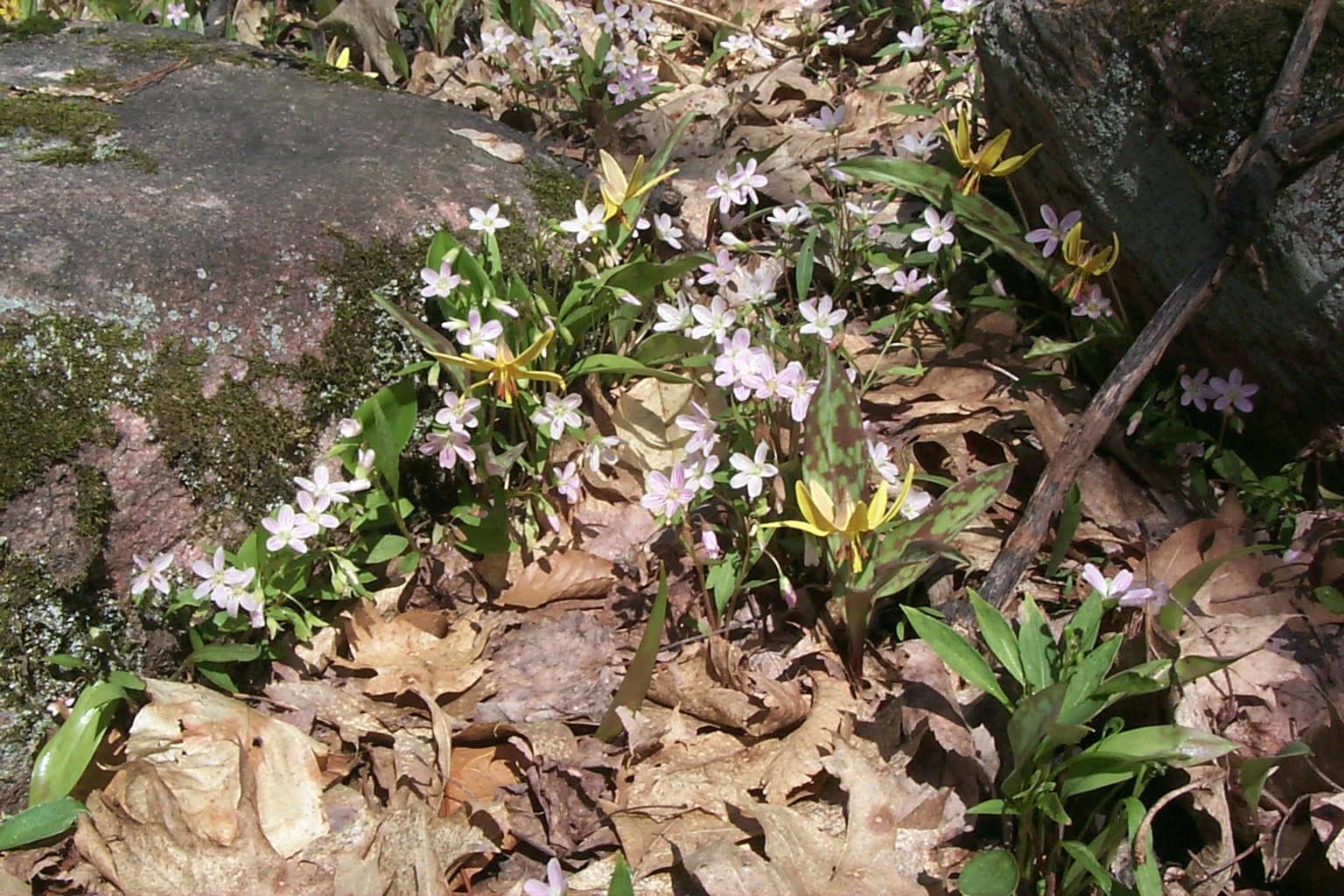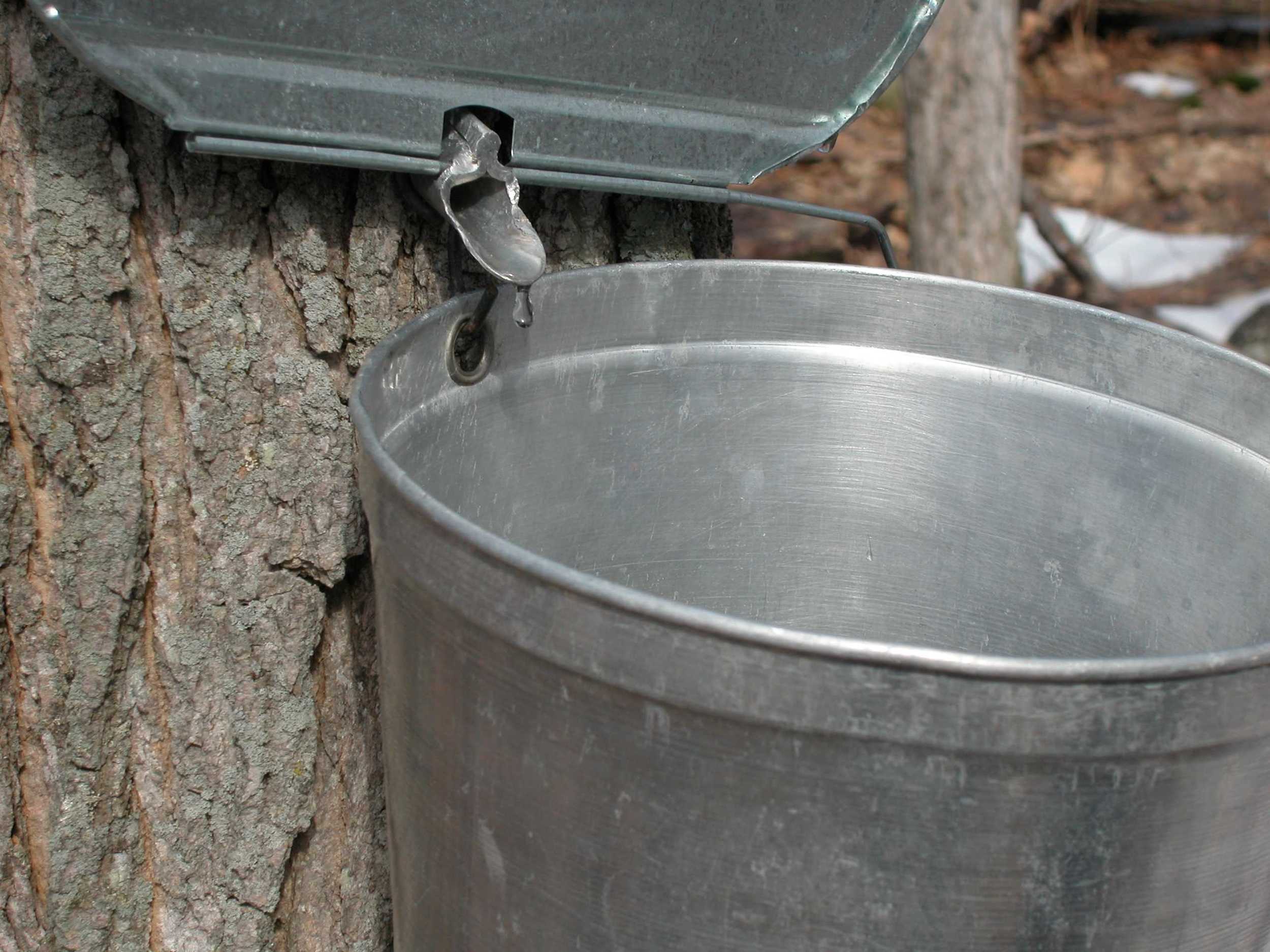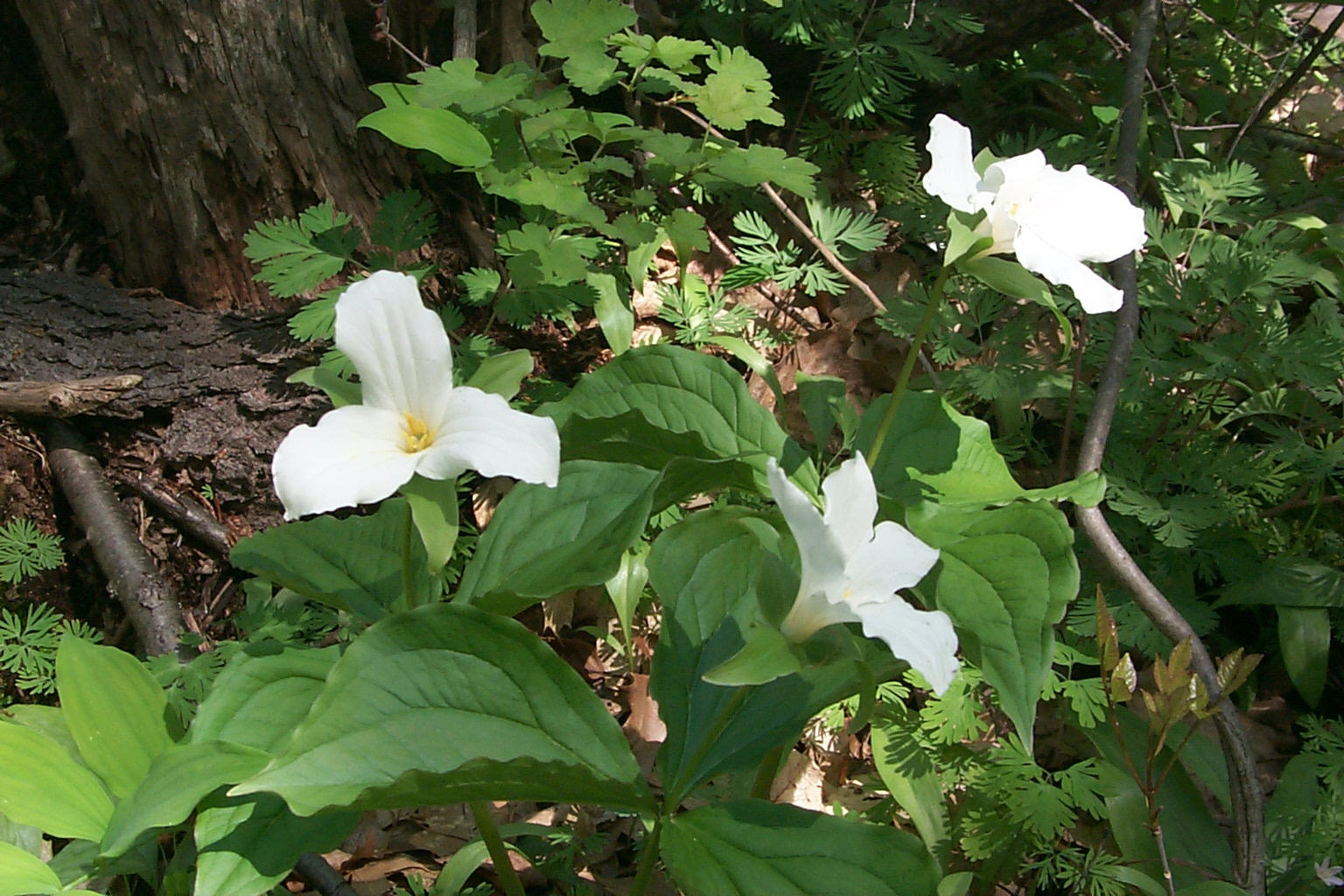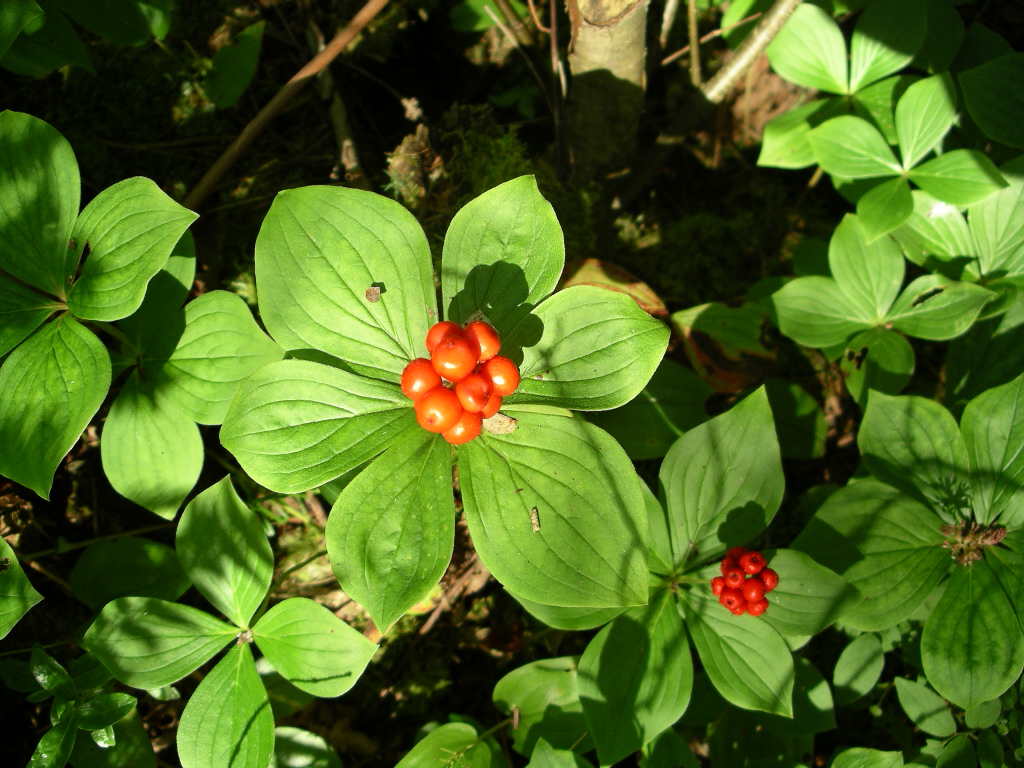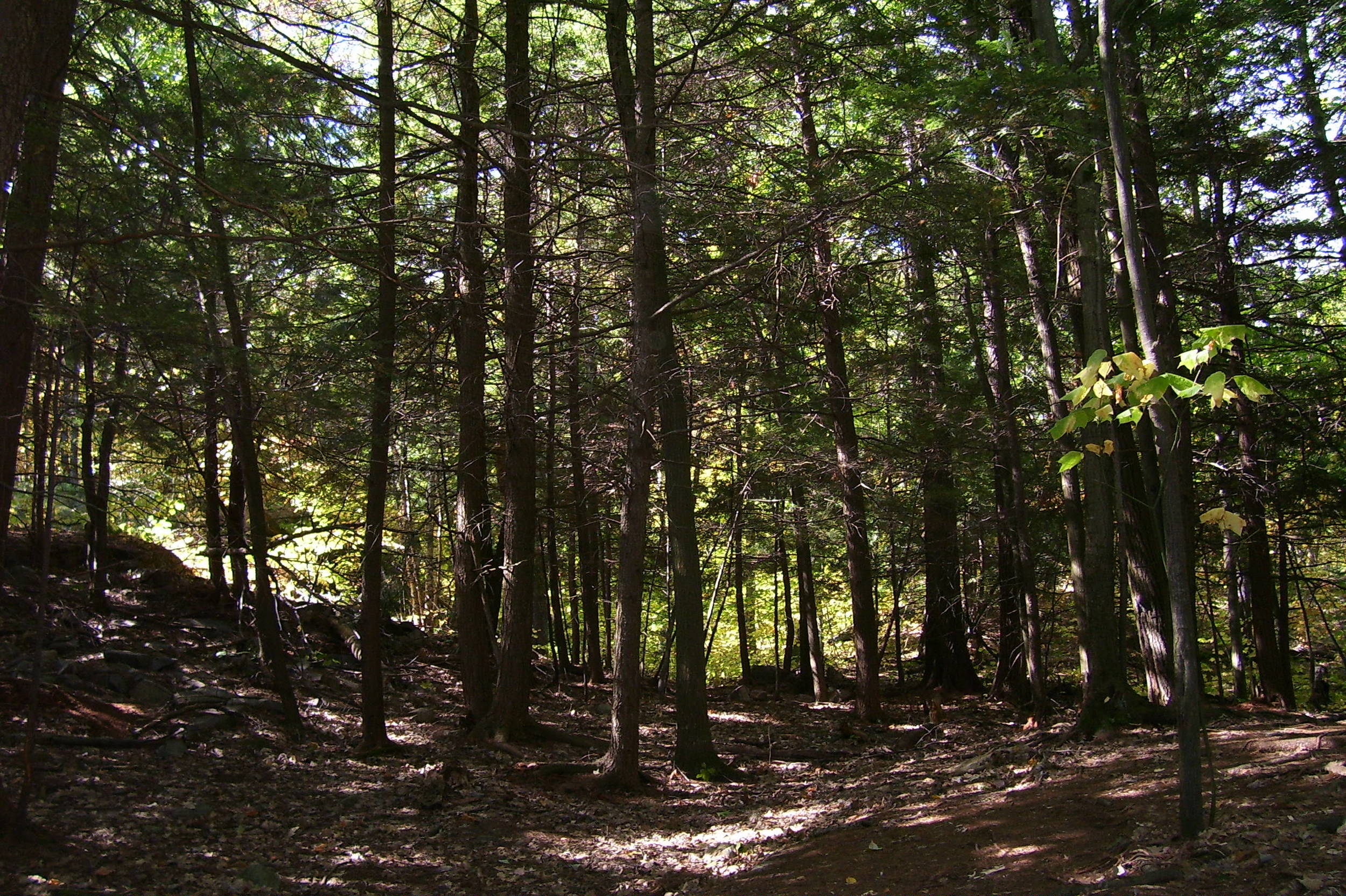
Although the initial attraction to Killbear may be its beaches, an early morning walk on one of its trails will reward you with encounters with many of its plants and animals.
What You'll Find Beyond the Beach:
Rock Pine Barrens
Rock barrens are the quintessential landscape of the glacier-scraped eastern Georgian Bay. Walking through these areas, you can see "chattermarks," visible evidence of boulders being tugged along between the weight of the glaciers and the bedrock below.
On the rock barrens, you can still witness today how plant life began after glaciation. On the bare rock you will see green, grey, brown, orange, and black lichens clinging to the rock itself. Where more soil has built up you will see mosses and small plants. Drought-tolerant red oak are found on rock barrens. Where both water and soil can accumulate, you see "vegetation islands," islands of sphagnum moss, blueberry and huckleberry bushes and the area's iconic white pines.
Best place to go to see Rock Barrens at Killbear: Twin Points Trail.
Wetlands
Wetlands are some of the most important areas of Killbear. Low-lying depressions have poor drainage, leading to wetlands in this area of bedrock foundations. Beavers create many wetlands by constructing dams.
Killbear's wetlands are vital nursery areas for many species of birds, amphibians, and insects. They are important feeding areas for others.
Best place to go to see Wetlands at Killbear: Lookout Point Trail.
Mixed Forests
Away from the shoreline, you'll find areas with deeper soils. Sugar Maple, American Beech, Hemlock and Yellow Birch dominate. These forested areas hold water, reduce erosion, and build soil. In the heat of the day, you'll find relief in the coolness of the forest shade.
Interior forest species like Red-shouldered Hawk, Pileated Woodpecker, White-tailed Deer, Black Bear, Porcupine and Fishers can sometimes be seen.
The forest floor is alive with interconnected fungal mats, insects and salamanders. In the spring, spring wildflowers burst forth with colour before the leaves are on the trees. In the fall, a walk through the woods displays the abundance of mushroom species, spectacular autumn leaves, and the fragrant smell of fallen leaves.
